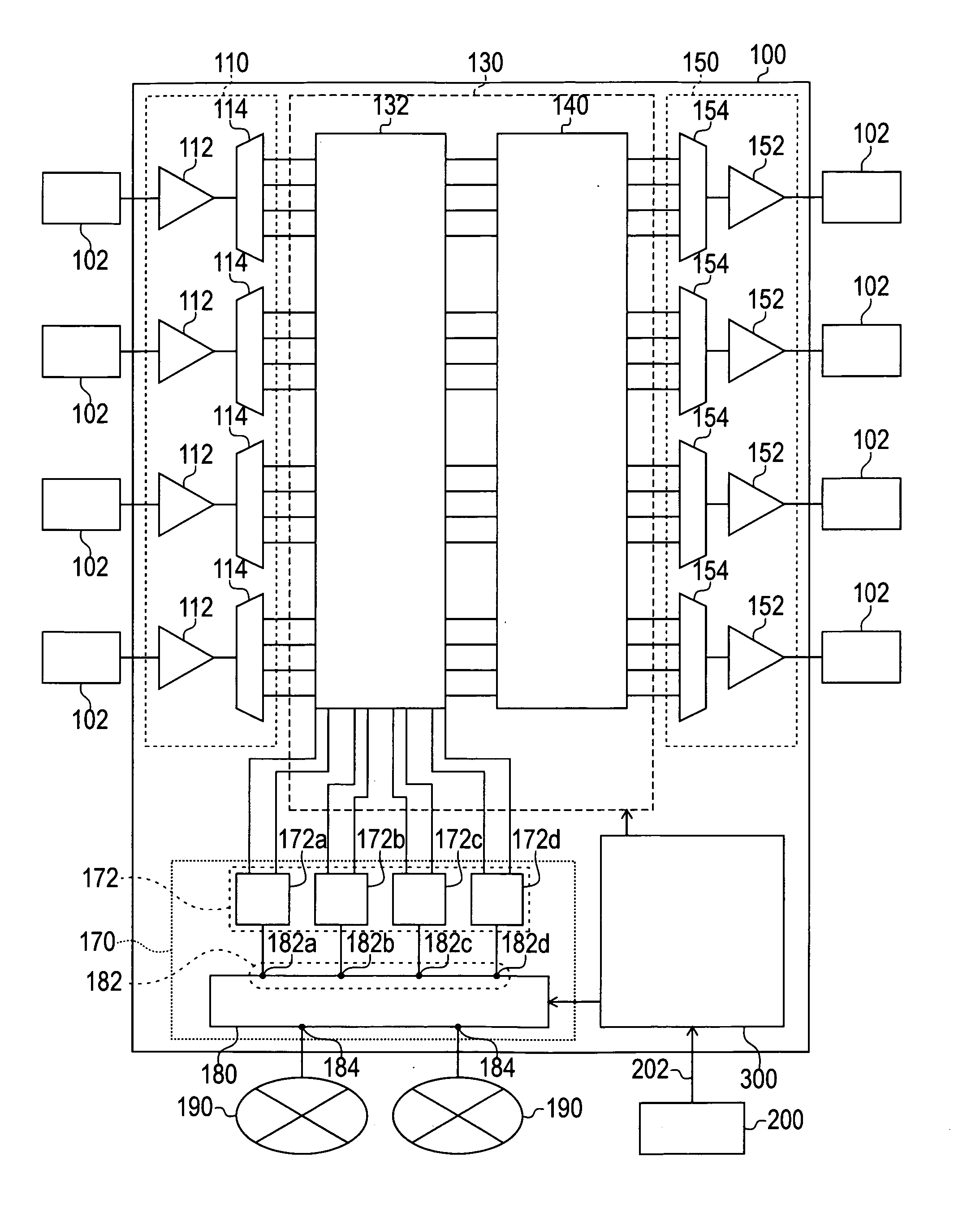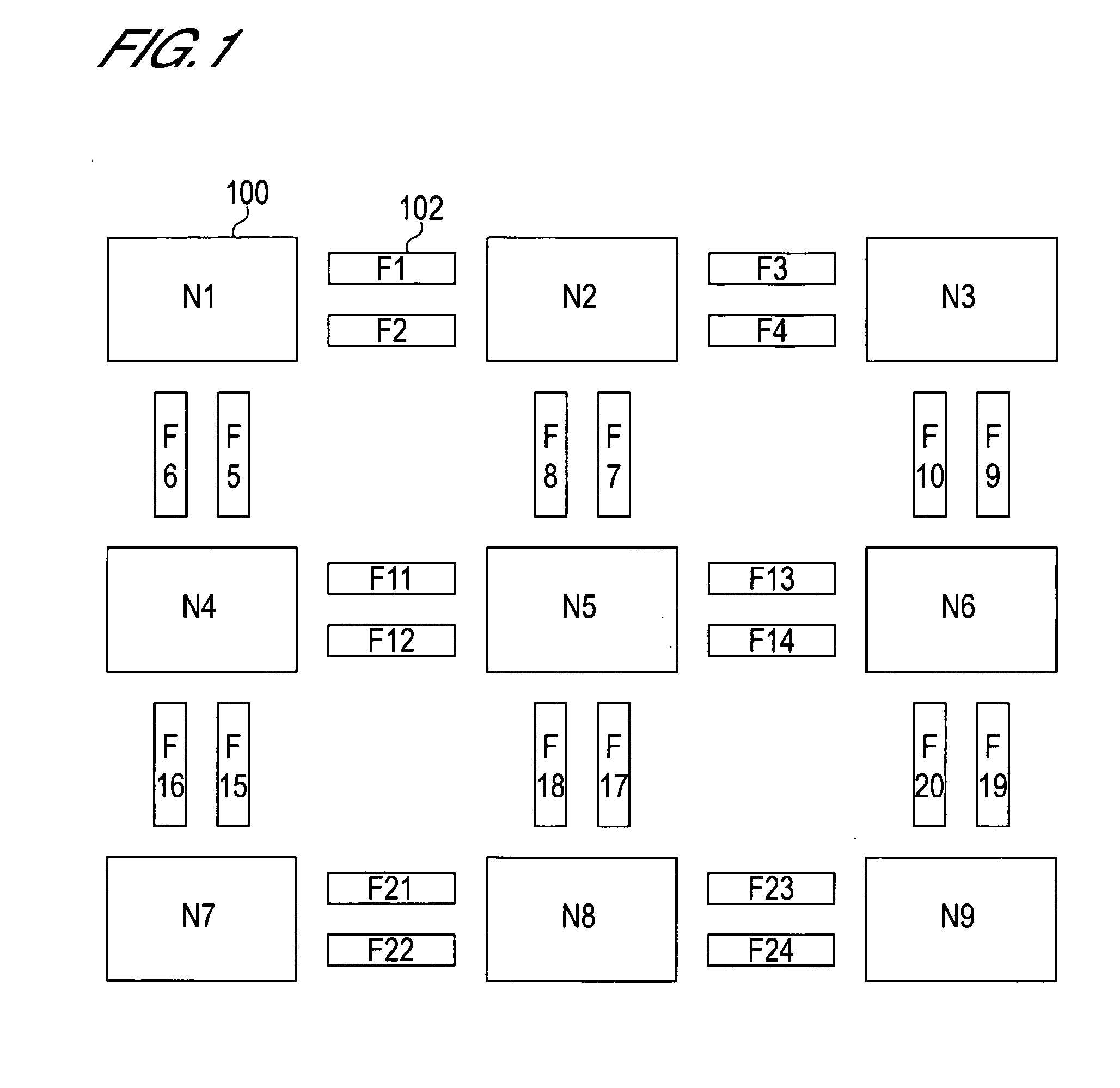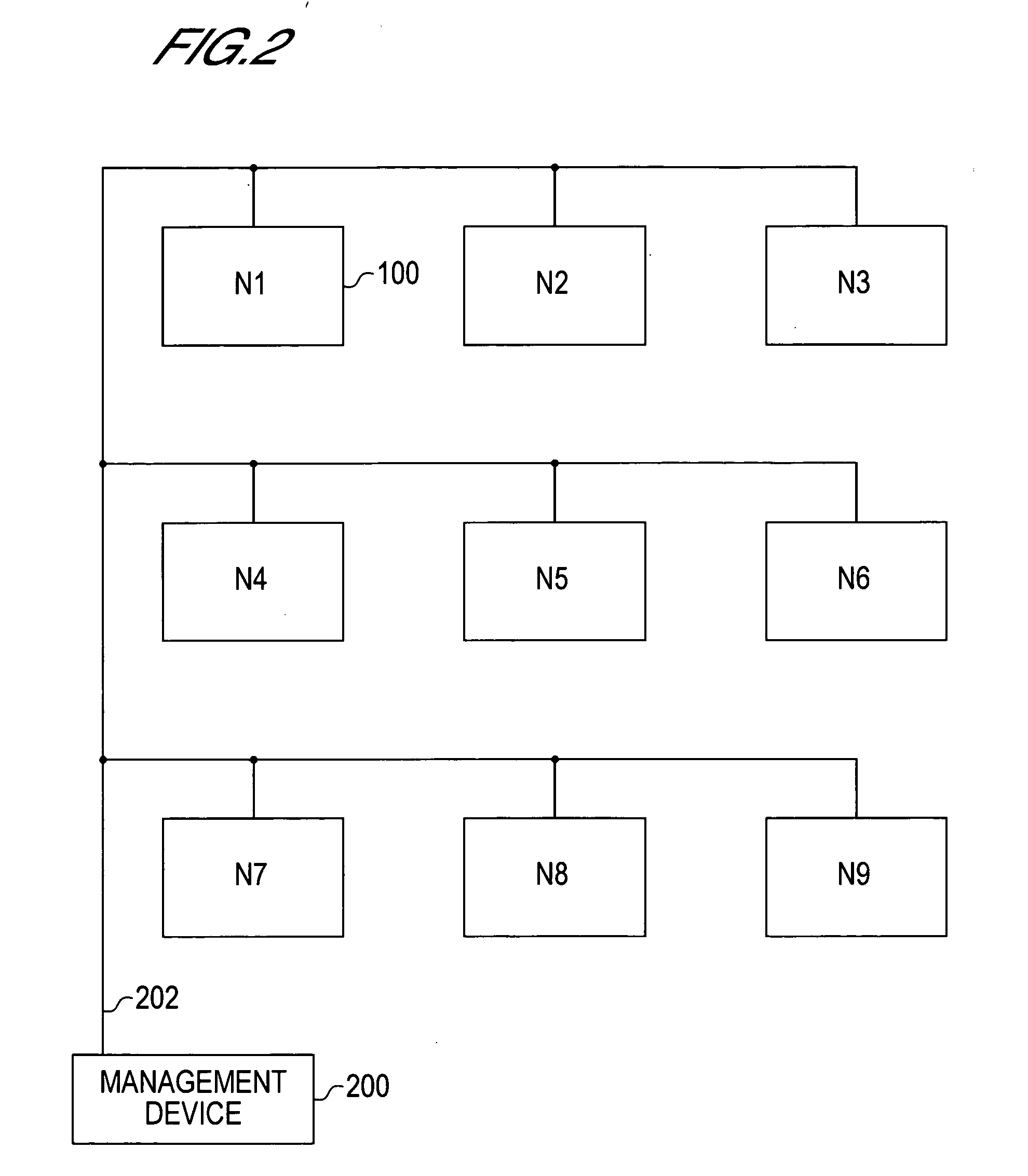Node device, optical communication network, optical path reserve method and computer-readable medium comprising a program
a technology of optical communication network and computer-readable medium, which is applied in the direction of multiplex communication, optics, instruments, etc., can solve the problems of increasing processing time required, increasing processing load, and increasing the time required until path setting completes, so as to achieve the effect of further reducing the time required for path setting
- Summary
- Abstract
- Description
- Claims
- Application Information
AI Technical Summary
Benefits of technology
Problems solved by technology
Method used
Image
Examples
first embodiment
Operation of First Embodiment
[0122] Now the optical path reserve method for setting a new optical path in the optical communication network where a plurality of optical paths are set will be described with reference to FIG. 6 and FIG. 7A to C.
[0123] In the reserve packet receive step in step (hereafter “S”) 10, a self node device receives a reserve packet from an adjacent node device or a management device. In this step, the packet receive means 332 receives the packet via the control line 202. Responding to the reception of the packet, the packet receive means 332 reads the reserve packet ID which has been written as the ID to indicate the reserve packet in the ROM 312, for example, and collates the packet ID assigned to the received packet and the reserve packet ID. If the packet ID of the received packet matches the reserve packet ID, the received packet is judged as a reserve packet. If the received packet is a reserve packet, this reserve packet is readably written to the open...
first example
[0152] An example of setting a new optical path in an optical communication network in which a plurality of optical paths are set will be described with reference to FIG. 1 to FIG. 10 and Table 1 to Table 8.
[0153] In the initial state, bidirectional optical paths are set between 9 sets of node devices. A pair of bidirectional optical paths, which is pair optical paths in opposite directions, which are set in each node device N1, N2, . . . N9, pass through the same node devices. In this example, it is assumed that there are 4 transmission possible wavelengths, λ1 to λ4. In FIG. 8, the arrow of the solid line indicates the optical path of which the wavelength ID is 1 (λ1), the arrow of the broken line indicates a path of which the wavelength ID is 2 (λ2), the arrow of the dotted line indicates a path of which the wavelength ID is 3 (λ3), and the arrow of the dashed line indicates a path of which the wavelength ID is 4 (λ4).
[0154] Specifically, between N1 and N4, an optical path from...
second embodiment
[0223] In the first embodiment, one destination node device is selected, and one wavelength is allocated to the node device, and the reserve packet is updated. While in the second embodiment, a plurality of destination node devices are selected, and all transmission possible wavelengths are allocated to each node device, and the reserve packet is updated. In the following description, description the same for the first embodiment will be omitted.
[0224] The control section of the node device according to the second embodiment will be described with reference to FIG. 11A and FIG. 11B. The control section of the node device according to the second embodiment comprises a transmission wavelength change means 353, reserve packet transmission count storage means 364 and reserve failure judgment means 366, which is different from the control section of the node device according to the first embodiment, and the rest of the configuration is the same as the first embodiment, so description th...
PUM
 Login to View More
Login to View More Abstract
Description
Claims
Application Information
 Login to View More
Login to View More - R&D
- Intellectual Property
- Life Sciences
- Materials
- Tech Scout
- Unparalleled Data Quality
- Higher Quality Content
- 60% Fewer Hallucinations
Browse by: Latest US Patents, China's latest patents, Technical Efficacy Thesaurus, Application Domain, Technology Topic, Popular Technical Reports.
© 2025 PatSnap. All rights reserved.Legal|Privacy policy|Modern Slavery Act Transparency Statement|Sitemap|About US| Contact US: help@patsnap.com



